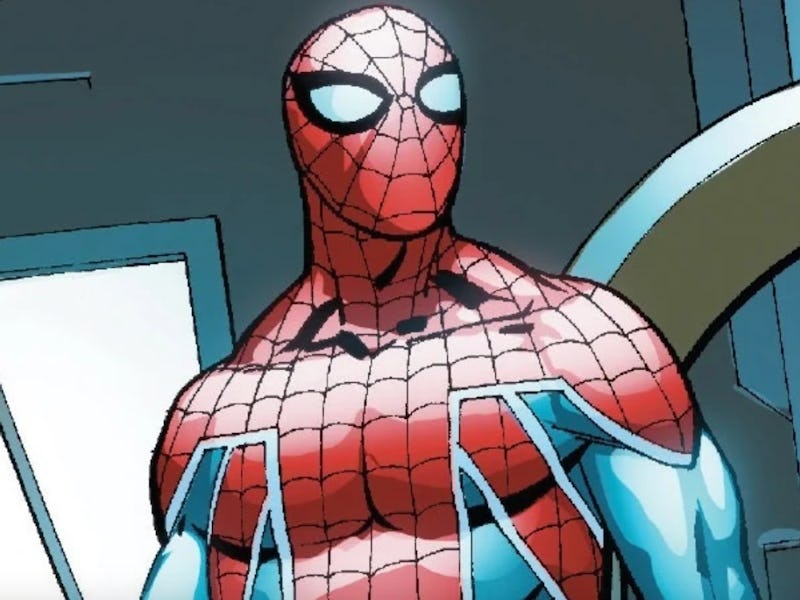Spider-Man 3 needs to bring one multiversal web-slinger into the MCU
Will No Way Home finally introduce a non-American web-slinger?

Marvel and Sony could blow their Spider-Man franchise wide open this year.
The two studios are set to release Spider-Man: No Way Home this December; with this Marvel Cinematic Universe entry, they’ll bring back characters from past Spidey films, including Alfred Molina’s Doc Ock and — if rumors are to be believed — Andrew Garfield and Tobey Maguire’s Peter Parkers.
But there’s no reason to think Spider-Man: No Way Home’s surprise characters will be limited to ones who’ve already appeared on-screen in previous Spider-Man or Marvel Cinematic Universe films. The Spider-Verse is, after all, a wide and expansive sub-universe in Marvel comics — one full of vibrant characters who could shine brightly on the big screen.
Introducing the Spider-Army — Right now, the door’s open for Spider-Man: No Way Home to take a page out of Spider-Man: Into the Spider-Verse’s playbook and bring even the most obscure web-slingers into the MCU. That means the film has the narrative potential to introduce beloved characters like Miles Morales, Miguel O’Hara, Gwen Stacy/Spider-Gwen, and even Ben Reilly/The Scarlet Spider.
Many of those characters have already crossed over and teamed up in the comics — forming groups like the Web-Warriors and Spider-Army along the way. But, as far as we’re concerned, no Spider-Man team-up would be complete without William Braddock a.k.a. Spider-UK.
Spider-UK, as depicted in Amazing Spider-Man Vol. 3 #9. Published in 2014.
Welcome, William Braddock — Introduced in the comics for the first time in 2014, Billy Braddock is a rookie Captain Britain who, upon learning that an evil family has its sights set on hunting down every Spider-Man in the multiverse, is tasked with helping to protect the remaining web-slingers. Given a talisman that lets him travel freely across the multiverse, Braddock aims to recruit every Spider hero he comes across into one Spider-Army.
Together, the group is successful in stopping the evil family hunting them, but Braddock discovers after the battle that he is unable to return to his own universe. Consequently, he creates a new base for himself in another reality and forms the Web-Warriors. However, when he and the rest of the Web-Warriors later travel to Earth-616 to stop Doc Ock from completing another sinister scheme, Braddock’s life is cut tragically short — bringing his run as one of the multiverse’s protectors to a sudden end.
Although Spider-UK’s presence in the comics has been limited up to this point, he’s made an impact. That’s not just because he’s one of the more notable non-American Spider-Men either. He’s also admirably heroic and firmly believes in the good he and his fellow web-slingers can accomplish when they band together; rooting for him is an especially easy thing to do.
And as both the leader of the Web-Warriors and someone capable of traversing freely across dimensions, Braddock is a character Marvel and Sony could easily use to help bring together various different Spider-Man variants in the MCU. Considering that the last two live-action Peter Parkers have been played by English actors, it’s about time one of these studios just went ahead and introduced a canonically British web-slinger.
Spider-UK standing with the Spider-Army in Amazing Spider-Man Vol. 3 #15. Published in 2015.
The Inverse Analysis — There has been plenty of talk about where Tom Holland’s Peter Parker may go after Spider-Man: No Way Home. The film has previously been called the conclusion of the trilogy that began with 2017’s Spider-Man: Homecoming, which raises the question of how much of a role Holland will have in future Marvel-Sony Spider-Man movies.
But even if No Way Home ends up being the final film in the two studios’ Peter Parker-centric trilogy, that doesn’t mean it needs to be the last Spider-Man film they make, or even the last one starring Tom Holland.
Instead, the two studios could use No Way Home to kickstart a new Spider-Verse trilogy, one that sees Holland’s Peter Parker regularly interacting with the multiverse’s other web-slingers — including Spider-UK.
Spider-Man: No Way Home swings into theaters on December 17, 2021.
This article was originally published on